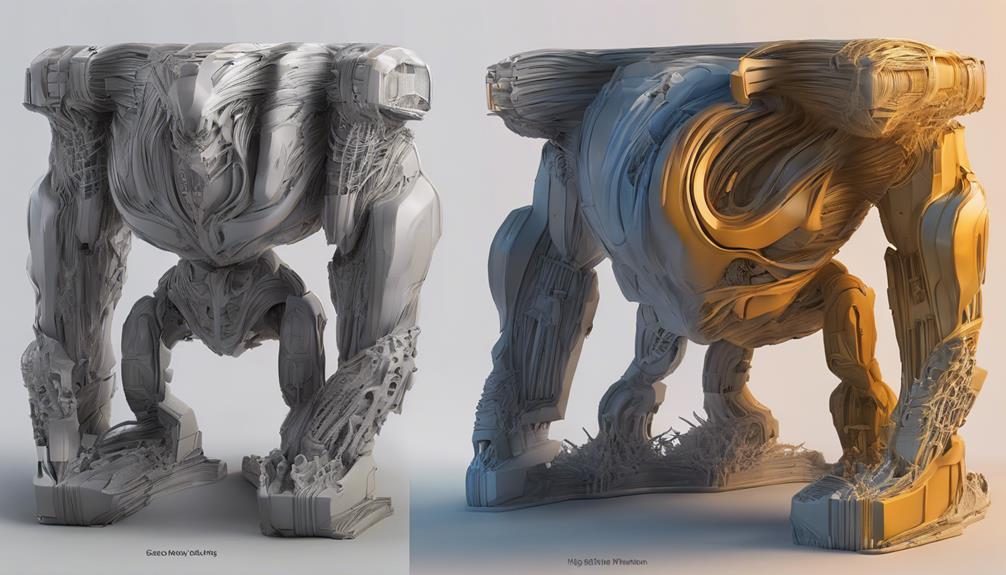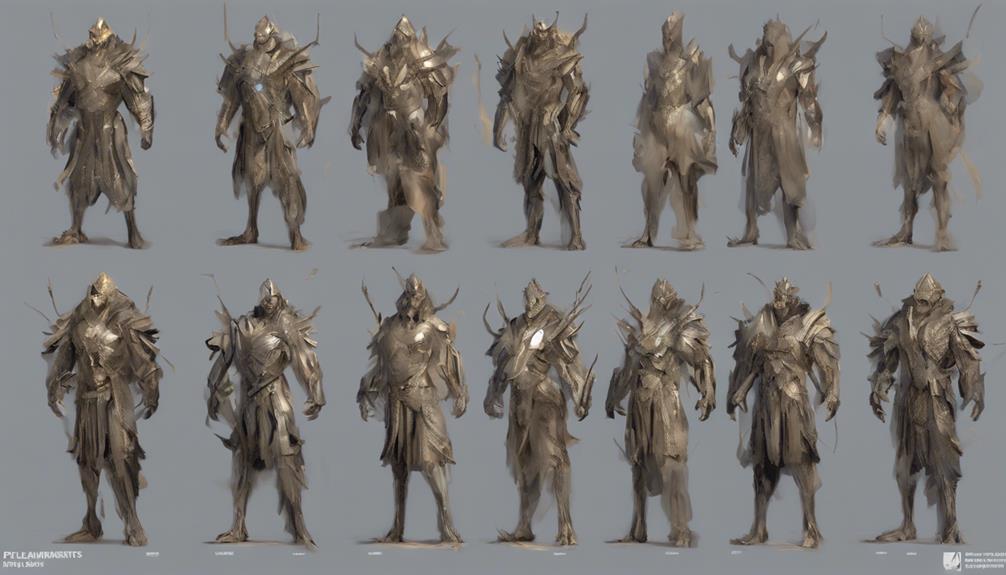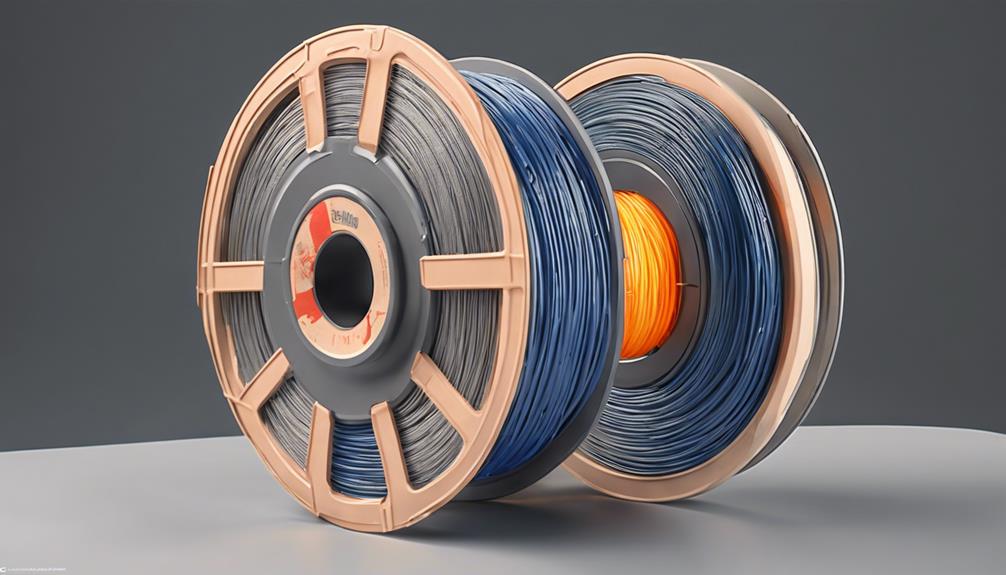In the domain of 3D printing, the clash between PLA and PETG filaments sparks a debate among enthusiasts and professionals alike. The battle of qualities such as print precision, mechanical strength, and versatility pits these materials against each other in a quest for supremacy. As users navigate the intricate web of properties and applications that define PLA and PETG, the question arises: which filament will emerge victorious in this showdown of performance and reliability? The answer lies in a detailed exploration of their attributes and real-world performance, shedding light on the best choice for various printing needs.
Printing Properties Comparison

In comparing the printing properties of PLA and PETG, it becomes evident that both filaments exhibit similar ease of use and share almost identical printing settings. PLA, known for its beginner-friendly nature, offers straightforward printing processes. On the other hand, PETG, while slightly more challenging to work with due to its tendency to warp, still maintains user-friendly characteristics.
Both materials can be printed using similar temperature settings and generally do not require significant adjustments in printing parameters. Overall, PLA and PETG stand out for their accessibility and versatility in various printing applications, making them popular choices among 3D printing enthusiasts and professionals alike.
Temperature Settings Variations
Temperature nuances play a significant role in determining the best printing conditions for both PLA and PETG filaments.
PLA typically prints best within a temperature range of 200-230°C, while PETG requires slightly higher temperatures ranging from 220-250°C.
Bed temperature is important for adhesion, with PLA often not requiring a heated bed, whereas PETG benefits from a heated bed set around 85°C.
It's important to avoid exceeding 245°C for Bowden-type printers like the Ender 3. Additionally, slightly increasing the bed temperature above the Glass Transformation Temperature can improve print quality.
Understanding and adjusting these temperature settings are key to achieving successful prints with both PLA and PETG filaments.
Material Characteristics Analysis

Comparing PLA and PETG filament characteristics reveals unique benefits for strength, flexibility, and durability across different printing applications.
- PETG is more flexible and less prone to breaking.
- PETG has higher tensile strength, impact resistance, and temperature resistance compared to PLA.
- PETG is more dimensionally stable, making it preferable for parts requiring tight tolerances.
- PETG surpasses PLA in terms of strength and quality prints.
- PLA prints cleaner with fewer imperfections when compared to PETG.
Environmental Durability Examination
When examining the environmental durability of PLA and PETG filaments, it becomes evident that their performance diverges noticeably when it comes to UV resistance, moisture absorption rates, and temperature stability. PETG showcases superior UV resistance, maintaining color and strength over time, making it ideal for outdoor applications. Additionally, PETG absorbs moisture at a slower rate than PLA, enhancing its suitability for environments with higher humidity levels. Moreover, PETG exhibits better resistance to higher temperatures without deforming, making it suitable for applications requiring heat resistance. On the other hand, PLA tends to degrade when exposed to sunlight, losing color and becoming brittle, limiting its outdoor and high-temperature utility.
| Properties | PLA | PETG |
|---|---|---|
| UV Resistance | Degrades, loses color, brittle | Maintains color and strength |
| Moisture Absorption | Absorbs moisture faster | Absorbs moisture slower |
| Temperature Stability | Deforms at high temps | Resists higher temperatures |
Safety and Application Insights

Considering the safety implications and practical applications of PLA and PETG filaments, it is essential to understand the distinct advantages each material offers in various functional and recreational printing scenarios.
- PETG is generally considered food safe with proper approvals.
- PLA may contain additives affecting safety, requiring FDA approval.
- PETG is better suited for functional models needing higher temperatures, UV resistance, strength, or flexibility.
- PLA is recommended for recreational printing, while PETG is preferred for functional prints.
- PETG is considered safer for food-related prints due to potential additives in PLA.
Frequently Asked Questions
Can PETG Be Used Interchangeably With PLA in 3D Printing?
PETG and PLA can be used interchangeably in 3D printing, with PETG offering higher strength, flexibility, and temperature resistance. However, PLA is recommended for beginners due to its ease of use and cleaner prints.
What Post-Processing Techniques Are Recommended for PETG Prints?
For PETG prints, recommended post-processing techniques include sanding to smooth rough surfaces, applying a heat gun or torch for minor imperfections, using epoxy or filler for larger gaps, and polishing with a finishing compound for a glossy finish.
Are There Any Specific Storage Requirements for PETG Filament?
Similar to a delicate instrument, PETG filament demands a controlled environment for storage. It thrives in a dry, cool setting away from sunlight to maintain its integrity. Humidity can diminish its print quality, akin to a musician playing in tune.
How Does the Print Speed Affect the Quality of PETG Prints?
Print speed directly impacts PETG print quality. Faster speeds may lead to poor layer adhesion, stringing, or warping, affecting overall print quality. Slower speeds allow for better cooling, enhancing detail and minimizing defects, ensuring high-quality PETG prints with ideal strength and durability.
Is There a Noticeable Difference in the Smell During Printing Between PLA and Petg?
When comparing the smell during printing between PLA and PETG filaments, PLA generally emits a sweeter, more pleasant odor resembling cooking corn syrup, while PETG has a slightly stronger, chemical-like smell that some users may find more noticeable.
Conclusion
In the epic battle of filaments, PLA and PETG have proven to be formidable contenders, each showcasing unique strengths and qualities.
While PLA's simplicity and cleanliness make it a favorite for recreational printing, PETG's robustness and durability set it apart in functional applications.
The clash between these two materials is nothing short of legendary, with users constantly debating which filament reigns supreme.
The battle continues, leaving 3D printing enthusiasts in awe of the endless possibilities that PLA and PETG offer.